For International Plastic Bag Free Day, Meet the Rohingya Refugees Upcycling Packaging and Hope
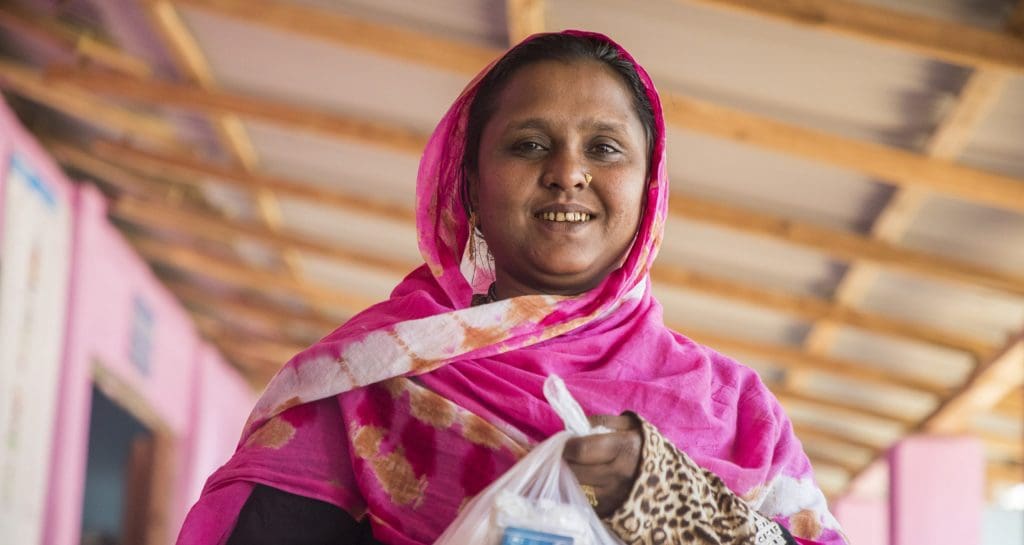
In 2002, Bangladesh became the first country in the world to ban the use of thin plastic bags and begin exploring environmentally safe alternatives. For International Plastic Bag Free Day, we’re going back to Bangladesh to see how Rohingya refugees are finding sustainable solutions and upcycling single-use products.
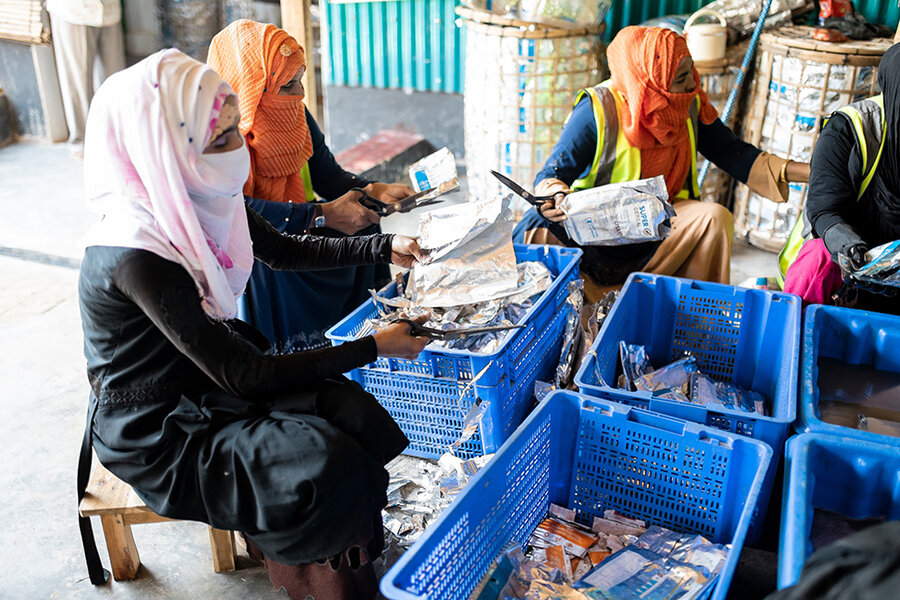
Women sort washed nutritional supplement packaging at the U.N. World Food Programme’s upcycling center in Cox’s Bazar.
Sustainable Solutions in the World’s Largest Refugee Camp
The bustling lanes of Kutupalong, the world’s biggest refugee camp in Cox’s Bazar, Bangladesh, are always full of chatter as they wind through busy makeshift bazaars. The camp is home to more than 860,000 Rohingya refugees from neighboring Myanmar, all of whom receive support from the United Nations World Food Programme (WFP).
Seasonal fruits and vegetables, clothes, locks and keys – whatever people need, the bazaar’s got it. Disappointment only creeps in with the piles of general waste.
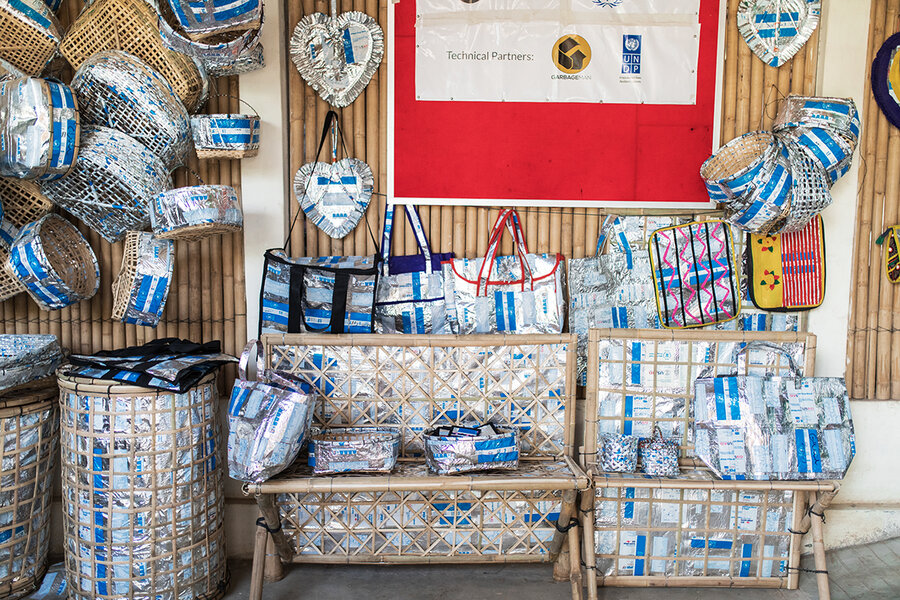
The Rohingya camps generate 119.8 tons of waste per day. Much like everywhere else, the waste problem in the camps demands a sustainable solution.
One way the U.N. World Food Programme is setting out to offset packaging waste is upcycling. Food from e-voucher outlets, where Rohingya families pick up their groceries every month, is packaging-free but aluminum metallized wraps have to be used for fortified food and special nutritional products.
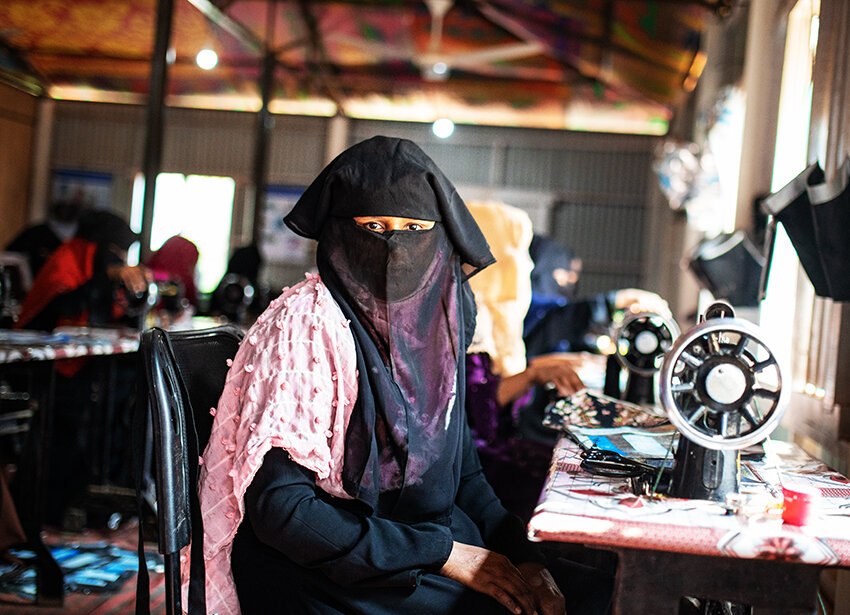
Women sewing the washed and pressed packaging. Apart from the environmental benefits at the so-called end-of-life stage of packaging, the center is also creating work opportunities for the Rohingya community, especially for Rohingya women.
Transforming Waste and Giving Hope
Through a new upcycling center, this packaging waste is transformed back into useful products. Rohingya refugees have been able to brainstorm, design, and create user-friendly products from waste.
“My life is much better now — I can send my children to school,” says Sayeda, a Rohingya woman who makes different types of bags and masks using upcycled material and her skills as a tailor.
“Now that I have started to earn, I am treated well by other people in my community. The centre has upcycled over half a million food packets into 2,500 different products since it started operating last September.”
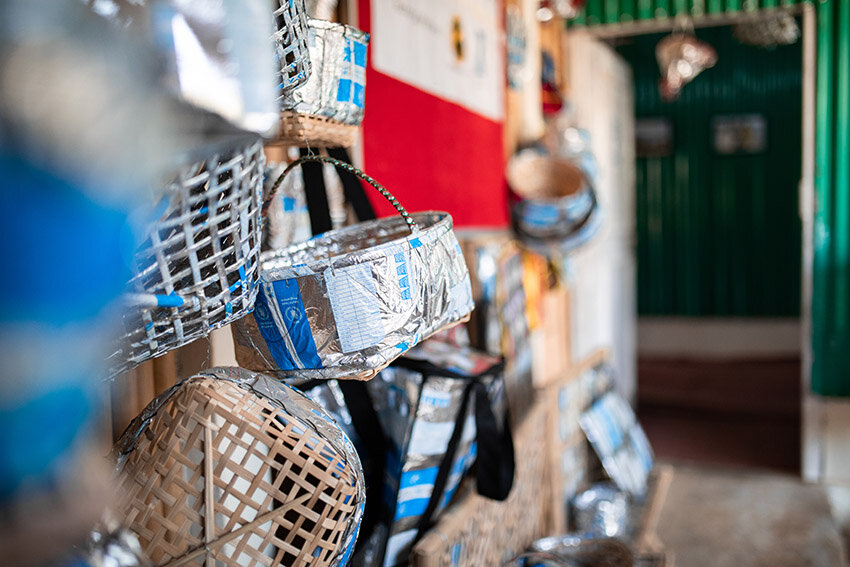
Waste can create a significant environmental threat, especially for groundwater. The finished products from the upcycling center is helping to improve the environmental health of the camps and surrounding areas.
From wallets and different kinds of bags — totes, pouches, zippers — to bins, baskets, bracelets, floor mats, and pen holders, the center is experimenting widely with its product types and designs.
The process maintains a clear division of labour. Walking inside the center, one can immediately spot the different groups working together on different tasks. Packaging is
- sorted
- washed
- dried
- compressed
- and processed by different groups.
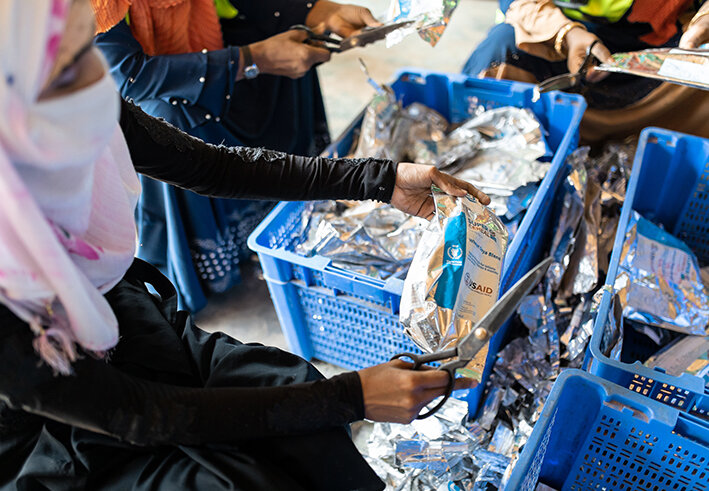
Each group of workers consists of six to seven volunteers from the Rohingya community. Currently, there are 86 volunteers working in the upcycling centre: 41 men and 45 are women.
The Rohingya refugee crisis added to an already challenging task of waste management in this part of Bangladesh, which relies on its coastlines and forests for food and livelihoods. Upcycling helps to keep the camp environment clean in two prominent ways:
- preventing the risk of floods
- keeping the groundwater safe
The Environmental Threat of Packaging Waste
Most of the household waste in the camps ends up in the canals and poses a big threat of flood during the monsoon season. As part of the monsoon preparedness plan this year, 50 miles of canals and drains were cleared and waste collected from these places.
Diane Broinshtein, the program policy officer heading the U.N. World Food Programme’s Self-Reliance for refugees program in Cox’s Bazar, said: “Minimizing the impact on the environment moving forward is important, and the U.N. World Food Programme has a big part to play in that. It’s up to the U.N. World Food Programme’ to ensure the impact of its work creates no negative side-effects, and this centre addresses that need.”




